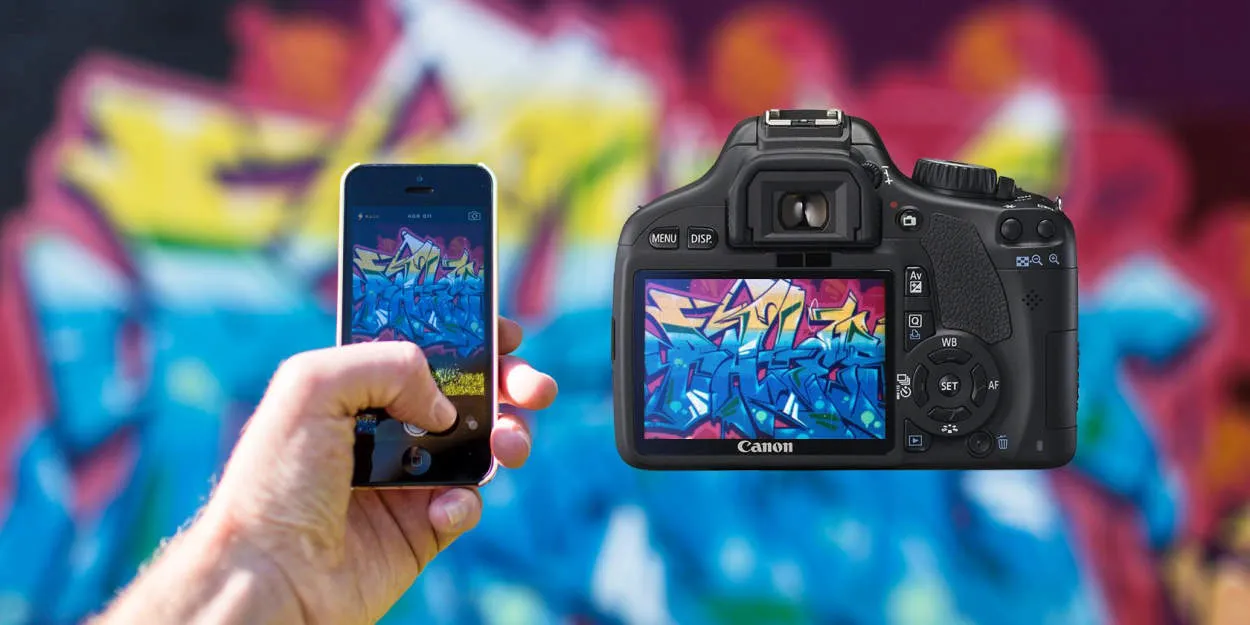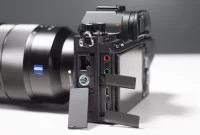In the age of smartphones, it may seem like professional cameras are becoming obsolete. However, when it comes to capturing high-quality images, cameras still have a clear advantage over smartphones. From superior image sensors to versatile lens options, this article explores why professional photography continues to rely on dedicated cameras.
The Importance of Lens Quality
When it comes to professional photography, having a camera with a high-quality lens is crucial. While smartphones have come a long way in terms of their camera capabilities, they still cannot match the performance of a dedicated camera with a superior lens.
One of the main advantages of using a camera over a smartphone is the ability to choose and switch between different lenses. Professional photographers understand that different lenses offer unique features and produce distinct effects on their photos. Whether it’s a wide-angle lens for capturing landscapes, a telephoto lens for zooming in on distant subjects, or a macro lens for close-up shots, having the right lens is fundamental.
Another vital aspect of lens quality is the ability to control aperture and depth of field. A high-quality lens allows photographers to manipulate these settings to achieve the desired artistic effect. Whether it’s creating a blurred background to emphasize the subject or capturing sharp details throughout the entire frame, having control over aperture can significantly enhance the quality of the photos.
Furthermore, the construction and materials used in professional camera lenses are designed to minimize optical aberrations and distortions. This results in sharper, clearer, and more accurate images compared to those taken with smartphone cameras. Lens quality also plays a significant role in capturing colors accurately and maintaining proper contrast, allowing photographers to reproduce scenes with exceptional fidelity.
Lastly, lens quality directly impacts the overall precision and image resolution. Professional lenses are built with advanced optics, ensuring maximum sharpness and resolving power. This becomes especially crucial when printing larger-sized images or cropping photos while maintaining exceptional detail and image quality.
In conclusion, the importance of lens quality in professional photography cannot be overstated. It allows photographers to have more control over their images, produce unique effects, and maintain superior image quality. While smartphone cameras have their benefits, they still cannot match the versatility and performance provided by dedicated cameras with high-quality lenses.
Full Manual Control for Unlimited Creativity
In the world of professional photography, cameras still hold a significant advantage over smartphones. While smartphones have made tremendous strides in terms of camera technology, they still lack the full manual control that dedicated cameras provide. This manual control is essential for photographers who want to unleash their creativity and capture stunning images.
Professional cameras offer a wide range of settings that allow photographers to have complete control over the exposure, focus, and depth of field. They allow users to adjust aperture, shutter speed, ISO, and white balance, among other settings. This level of control is crucial for creating unique and artistic photographs that stand out from the crowd.
Additionally, cameras offer interchangeable lenses, which further enhance their versatility. Photographers can choose specific lenses depending on the desired effect, whether it’s capturing wide-angle landscapes, telephoto shots from a distance, or macro close-ups. This flexibility allows photographers to express their vision in ways that smartphones simply cannot replicate.
Another advantage of using cameras is the larger sensor size. Cameras are equipped with larger sensors than smartphones, which results in better image quality, especially in low-light conditions. With larger sensors, photographers can capture more detail, reduce noise, and achieve greater dynamic range.
Furthermore, post-processing plays a significant role in professional photography. Cameras provide photographers with the option to shoot in RAW format, which preserves all the data captured by the sensor. This provides greater flexibility during the editing process as photographers can make more significant adjustments to exposure, color, and other elements without sacrificing image quality.
In conclusion, while smartphones have become increasingly capable in terms of photography, professional cameras still hold a distinct advantage. The full manual control, interchangeable lenses, larger sensors, and the ability to shoot in RAW format all contribute to unlimited creativity. For those who are passionate about taking their photography to the next level and creating truly exceptional images, investing in a professional camera is a must.
Superior Low-Light Performance
When it comes to professional photography, cameras undeniably outperform smartphones, particularly in low-light conditions. One of the key factors that sets cameras apart is their ability to capture high-quality images with minimal noise even in challenging lighting situations.
Cameras are equipped with larger image sensors, allowing them to gather more light and produce clearer, more detailed photos in low-light environments. This gives photographers the flexibility to shoot in various settings, from dimly lit interiors to nighttime landscapes, without compromising image quality.
Additionally, cameras offer advanced features such as adjustable ISO settings, which allow photographers to control the sensitivity of the sensor to light. This means that even in extremely dark conditions, cameras can produce well-exposed images by increasing the ISO, whereas smartphones struggle to achieve comparable results.
Furthermore, cameras often incorporate technologies like image stabilization, which compensate for hand movements during longer exposures. This ensures sharper images even in low-light situations where shaky hands may cause blurriness.
In summary, the superior low-light performance of cameras makes them the preferred choice for professional photographers. Whether capturing stunning nightscapes or documenting indoor events, cameras offer unrivaled image quality and versatility in challenging lighting conditions.
Image Stabilization for Sharper Shots
When it comes to professional photography, cameras have a clear advantage over smartphones. One of the key features that sets them apart is image stabilization. This technology plays a crucial role in capturing sharp and clear shots, even in challenging shooting conditions.
Many high-end cameras today are equipped with advanced image stabilization systems. These systems employ various techniques to counteract camera shake, resulting in sharper images. Optical image stabilization (OIS) is one commonly used method, where lens elements or the image sensor itself are adjusted to compensate for motion.
Image stabilization is particularly beneficial in low-light situations, where longer exposures are often necessary. Even the slightest movement can lead to blurry photos when shooting in these conditions. With image stabilization, photographers can confidently capture handheld shots without the need for a tripod, ensuring sharper results.
Furthermore, image stabilization also proves advantageous when photographing subjects in motion. Whether it’s sports, wildlife, or street photography, cameras with this feature enable photographers to freeze action with greater precision. By minimizing blur caused by camera shake, image stabilization allows for crisp and more professional-looking shots.
While smartphones have made remarkable strides in camera technology, they still struggle to match the image stabilization capabilities found in dedicated cameras. Factors such as smaller sensors and limited physical space make it challenging to incorporate advanced stabilization systems into smartphone designs. As a result, smartphone users often face limitations when it comes to capturing sharp images in various shooting conditions.
In conclusion, image stabilization plays a vital role in professional photography as it ensures sharper shots even in challenging shooting scenarios. Cameras with this feature outperform smartphones when it comes to capturing detailed images with minimal blur. As the demand for high-quality photographs continues to rise, image stabilization remains a significant reason why cameras are the preferred choice for professional photographers.
Conclusion
In conclusion, professional cameras still hold a significant advantage over smartphones when it comes to photography. Despite the advancements in smartphone camera technology, the superior image quality, versatility, and control offered by professional cameras remain unmatched. Whether it’s capturing high-resolution images, adjusting settings for different lighting conditions, or utilizing specialized lenses, professional cameras provide the tools necessary to create exceptional photographs that smartphones cannot replicate.




